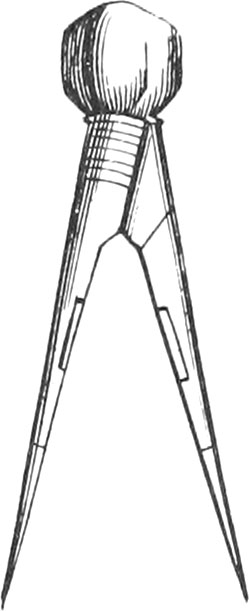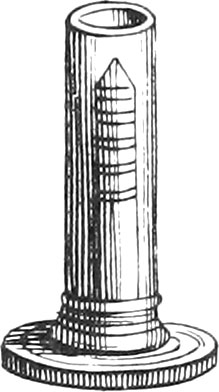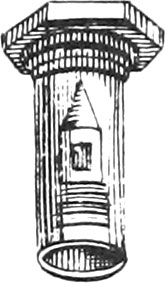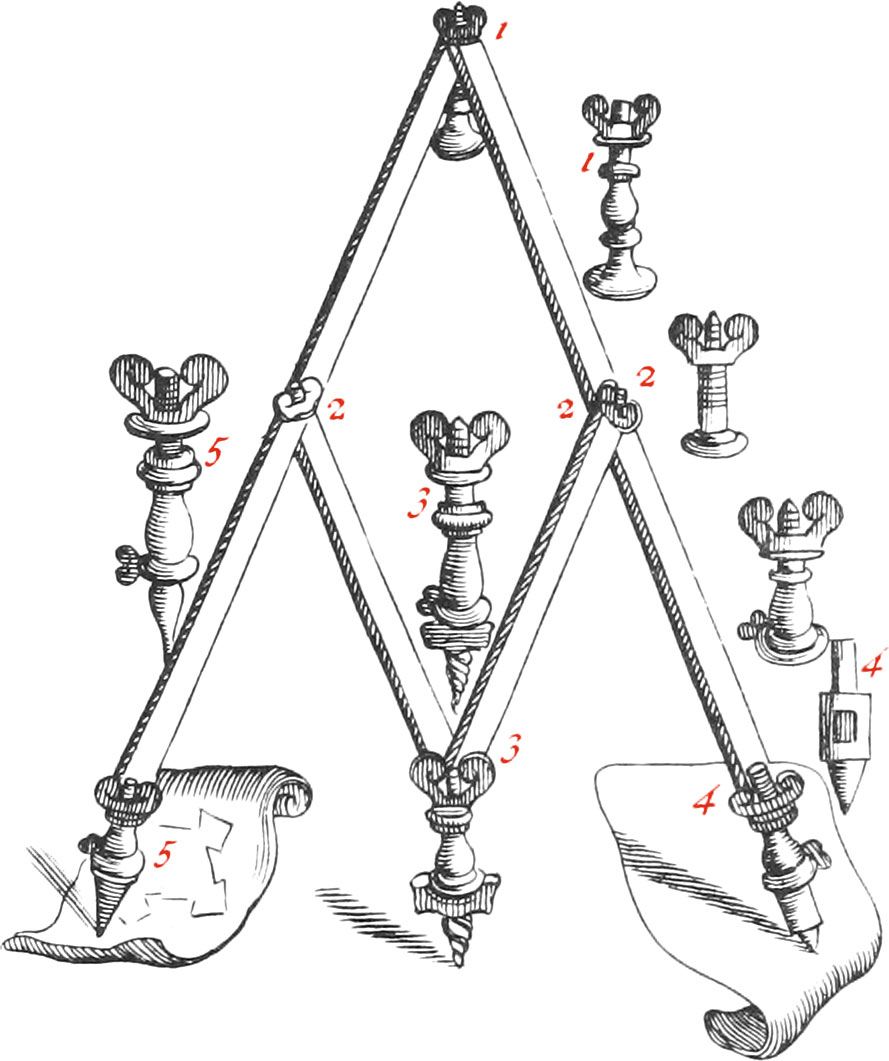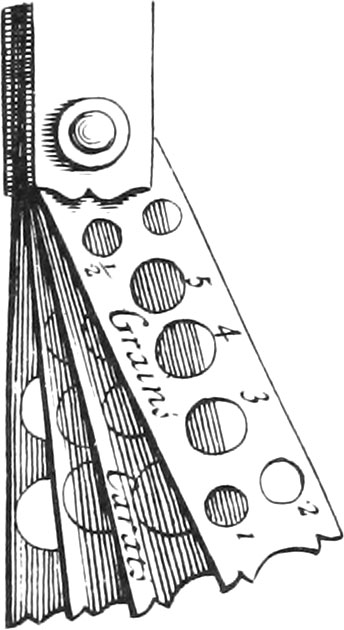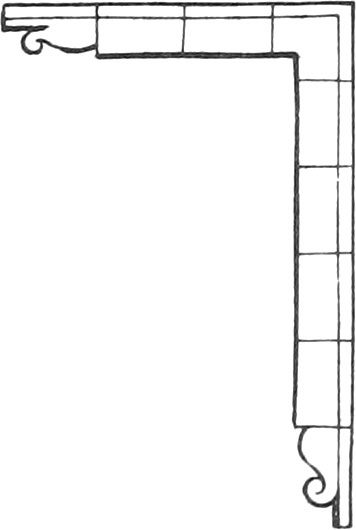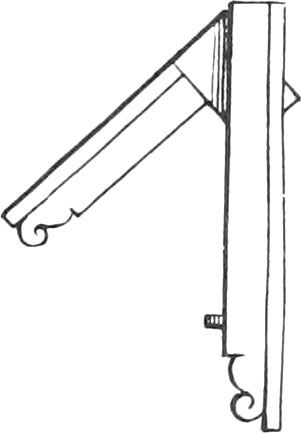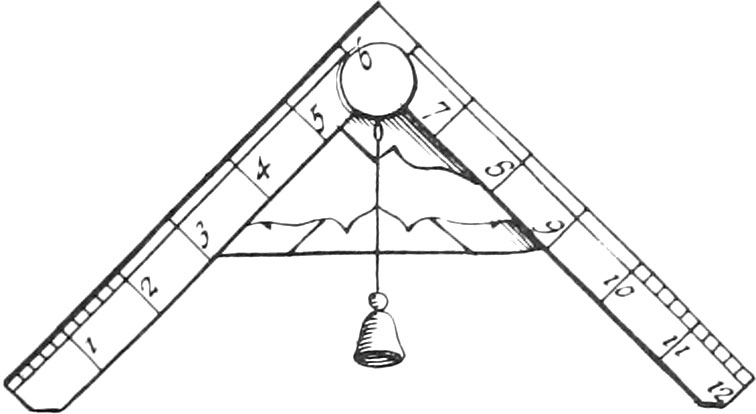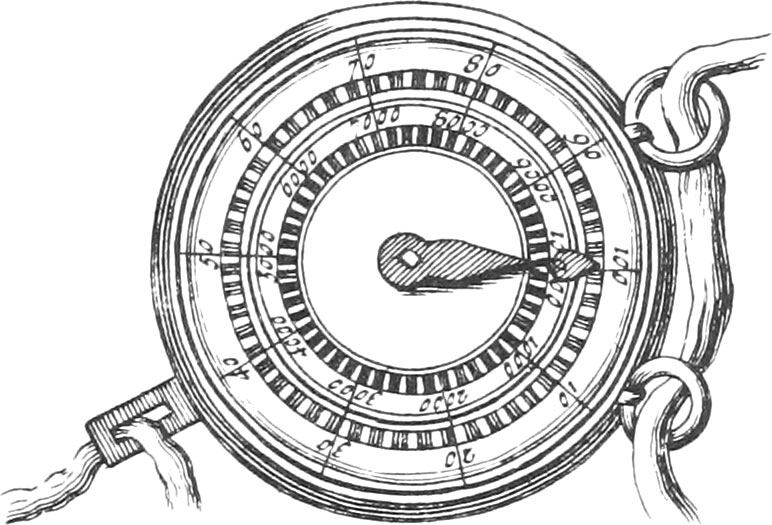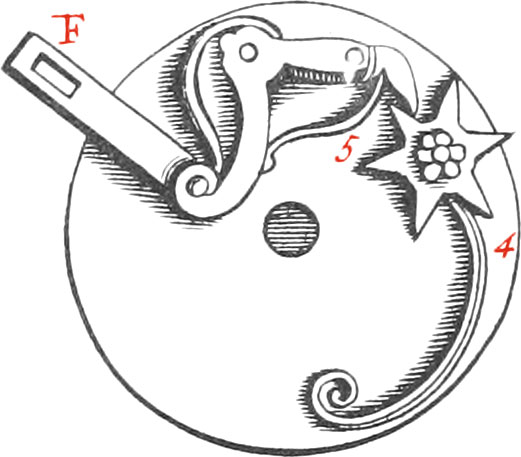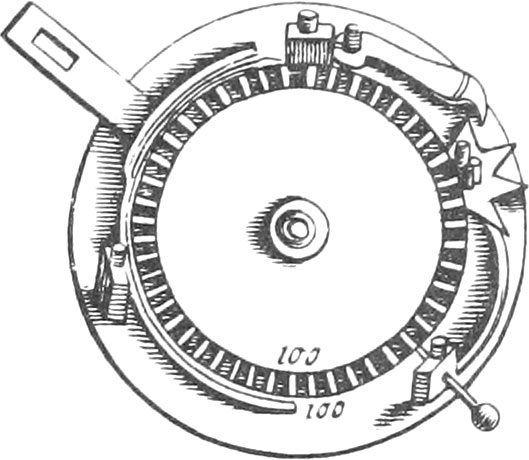The Figures 6, 7, represent two armed Load-Stones; the first in the Form of a Parallelepipedon, and the second in the Form of a Sphere: But before we shew the bed way of arming them, we will enumerate some of the Properties and Virtues of Load-Stones.
The Load-Stone is a very hard and heavy Stone, found in Iron Mines, and is almost the Colour of Iron, for which reason it is reckoned among the Metallick Kind: it hath two wonderful Properties, one whereof is to attract Iron, and the other to direct itself towards the Poles of the World.
The Load-Stone attracts Iron, and reciprocally Iron attracts the Load-Stone, notwithstanding any other Body’s Interposition between them. This Stone likewise communicates to Iron a Faculty of attracting Iron: For Example, an Iron Ring that hath been touched with a good Load-Stone, will lift up another Iron Ring by only touching it, and this second a third, &c. but the first Ring must have a greater Degree of Attraction, than the second, and the second than the third, &c.
The Blade of a Knife that hath been touched with a Load-Stone, will likewise lift up Needles, and small Pieces of Iron: also several Sewing-Needles being laid upon a Table in a Row, and a Load-Stone being brought near the first, by which receiving the Magnetick Virtue, the said first Needle will attract the second, the second the third, &c. ’till they all come together.
That Iron reciprocally attracts the Load-Stone, when it can move freely, may be thus shewn: For if you put a Load-Stone into a hollow Piece of Cork, and set it floating upon the Surface of a Bason of Water, and bring a Piece of Iron at a convenient Distance to it, the Piece of Cork, together with the Stone, will accede to the Iron.
That Property of the Load-Stone which is always to respect the Poles of the World, may be shewn by the following Experiment: For having put a Load-Stone into a hollow Piece of Cork, and set them both a floating upon the Surface of still Water (there being no Iron, or other Obstacle near), the Load-Stone will always so dispose itself, that one certain Point thereof will regard the North, and the opposite Point the South.
But you must note, that the Load-Stone doth not exactly respect the North, it having at different Times, and in different Places of the Earth’s Superficies, different Declinations, or Variations therefrom, and at this time at Paris, varies 12 Deg. 15 Min. Westward: so that the South Pole of the Load-Stone varies above 12 Degrees from that of the World, and it’s Opposite so likewise. The Poles of a Load-Stone, are those two Places thereof, that respect the two Magnetick Poles of the World; and the principal Axis, is a right Line drawn from one Pole to the other, about which, the greatest Force of the Load-Stone manifests itself, and at the two Poles is greatest. Spherical Load-Stones have also ficted Equators, and Meridians, &c. from whence they are called Magnetick Spheres.
Now in order to find the Poles of a Load-Stone, you must cut a Hole in a Card of the Figure of the Stone, in which the Stone must be put, so that it’s principal Axis may be found in the Plane of the Card. This being done, Iron or Steel Filings must be strewed upon it: after which strike the Card softly with a little Stick, so that by putting the Filings in Motion, the Magnetick Matter may let them take a Circuit conformable to the way which that Matter takes in moving from a North Pore to another South one, and you will perceive the Filings ranged in the Figure of several Semi-Circumferences, whole opposite Ends are the Poles of the Load-Stone.
The Poles of a Load-Stone may otherwise be found, in plunging it into Iron or Steel Filings, or into very little Bits of Steel Wire; for then they will make different Configurations round the Stone, some of them lying flat on it, others half bent; and finally, others quite upright on it: and those Places of the Stone where the little Bits of Steel are perpendicular to it, are the Poles; and where they lie along, is the Equator.
Having thus found the Poles of a Load-Stone; which is the North or South Pole, may be known in laying the Stone in a hollow Piece. of Cork, swimming on Water, or by suspending it with a Thread, so that it’s Axis be parallel to the Horizon; for then that Pole of the Stone turning towards the North Pole of the World, will be the South Pole of the Stone, and the opposite Point the North Pole.
The Poles of a Load-Stone may likewise be found by means of a Compass; for bringing a touched Needle to the Stone, the End that was touched, will immediately turn towards that Pole of the Stone agreeing therewith, and the other End of the Needle will likewise turn towards the other Pole of the Stone.
The Poles of the Stone being found, the next thing will be to cut, and give it a regular Figure, in taking away the Superfluities either with a Saw, and Powder of Emery, or else with a Knife Grinder’s Grind-stone, preserving it’s Axis as long as possible, and giving a like Figure to it’s Poles.
Now to make a great many Experiments, it is necessary to give to a Load-Stone the most regular Figure possible, which is determined by the Likeness it hath to that of the irregular Mass it is composed of: the Cube, the Parallelepipedon, the Oval, and the Round are to be preferred, on account of having the principal Axis of the Stone as long as may be. If a Load-Stone is to be made in Form of a Sphere, it will not be difficult to find it’s Poles and Axis; you need only figure it with Powder of Emery in a round Iron Concave, and afterwards finish it with find Sand, in a round Brass Concave.
A Load-Stone in Figure of a Sphere, is very fit for many Experiments, and it’s Poles may be found in manner aforesaid: but it is necessary, before any pains be taken in cutting and figuring of a Load-Stone, to be assured of it’s Goodness, in observing whether it strongly attracts Filings, or little Bits of Steel; and whether there be not other Matter passing thro’ it’s Pores, which hinders the Magnetical Matter from circulating and passing from one Pole to the other.
The Goodness of a Load-Stone consists in two essential Things; which are, first, That it be homogeneous, having a great Number of Pores filled with Magnetick Matter, which passing thro’ them form about the Stone, as it were, a very extensive Whirlwind. In the second place, it’s Figure very much contributes to it’s Force (as we have already said), for it is certain, that of all Load-Stones of a like Goodness, that which hath the best Poles, it’s Axis longest, and whose Poles meet exactly in the Extremes, will be most vigorous.
Two Load-Stones placed in two hollow Pieces of Cork, which are both set floating upon the Surface of the Water, having their Poles of contrary Denominations turned to each other, will accede to each other; but if the Poles of the same Denomination be turned towards each other, then the Load-Stones will mutually recede from one another.
If a Load-Stone be cut into two Pieces, parallel to it’s Axis, the Sides of the Pieces that were together before the Division, will mutually recede from each other.
But if a Load-Stone be cut into two Pieces, according to it’s Equator, the Sides of the Pieces that were together before they were cut, will be found to have Poles of a contrary Denomination, and will accede to each other.
A strong Load-Stone touching a weak one, will attract it with it’s Pole of the same Denomination, &c.

